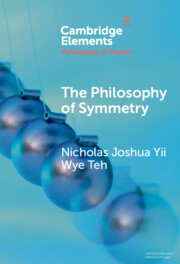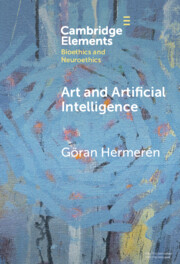327 results
15 - Artistic Witness and Response to Environmental Violence
- from Part III - Environmental Violence Impacts, Responses, Resistance, and Alternatives
-
-
- Book:
- Exploring Environmental Violence
- Print publication:
- 30 June 2024, pp 318-339
-
- Chapter
-
- You have access
- Open access
- HTML
- Export citation
“Draw a Guerrilla!” Betrayal, Solitude, and Revolutionary Art
-
- Journal:
- Latin American Research Review ,
- Published online by Cambridge University Press:
- 03 June 2024, pp. 1-15
-
- Article
-
- You have access
- Open access
- HTML
- Export citation
Chapter 17 - Goethe the Collector
- from Part III - Art
-
-
- Book:
- Goethe in Context
- Published online:
- 16 May 2024
- Print publication:
- 23 May 2024, pp 166-174
-
- Chapter
- Export citation
Chapter 16 - Goethe’s Drawings
- from Part III - Art
-
-
- Book:
- Goethe in Context
- Published online:
- 16 May 2024
- Print publication:
- 23 May 2024, pp 150-165
-
- Chapter
- Export citation
Chapter 15 - Greek and Roman Art
- from Part III - Art
-
-
- Book:
- Goethe in Context
- Published online:
- 16 May 2024
- Print publication:
- 23 May 2024, pp 141-149
-
- Chapter
- Export citation

The Philosophy of Symmetry
-
- Published online:
- 21 May 2024
- Print publication:
- 20 June 2024
-
- Element
-
- You have access
- HTML
- Export citation
3 - Nietzsche’s Centaurs
-
-
- Book:
- Nietzsche and Literary Studies
- Published online:
- 03 May 2024
- Print publication:
- 25 April 2024, pp 59-90
-
- Chapter
- Export citation
Chapter 57 - Occupational Health
- from Section 5 - Patient Management
-
- Book:
- Clinical and Diagnostic Virology
- Published online:
- 11 April 2024
- Print publication:
- 18 April 2024, pp 286-291
-
- Chapter
- Export citation
8 - The Imagination in Its Freedom
-
- Book:
- Kant on Pleasure and Judgment
- Published online:
- 19 April 2024
- Print publication:
- 11 April 2024, pp 159-186
-
- Chapter
- Export citation

Art and Artificial Intelligence
-
- Published online:
- 04 April 2024
- Print publication:
- 02 May 2024
-
- Element
- Export citation
Chapter 20 - Visual Art
- from Part IV - Arts
-
-
- Book:
- Vaughan Williams in Context
- Published online:
- 28 March 2024
- Print publication:
- 04 April 2024, pp 169-179
-
- Chapter
- Export citation
Images Above All: Richard Kroner and the Religious Imagination
-
- Journal:
- Harvard Theological Review / Volume 117 / Issue 2 / April 2024
- Published online by Cambridge University Press:
- 15 May 2024, pp. 342-367
- Print publication:
- April 2024
-
- Article
-
- You have access
- Open access
- HTML
- Export citation
‘A sad inheritance of misery’: the cultural life of hereditary scrofula in eighteenth-century England
-
- Journal:
- Medical History / Volume 68 / Issue 1 / January 2024
- Published online by Cambridge University Press:
- 15 March 2024, pp. 1-21
-
- Article
-
- You have access
- Open access
- HTML
- Export citation
A study on creative object biographies. Can creative arts be a medium for understanding object–human interaction?
-
- Journal:
- Archaeological Dialogues , First View
- Published online by Cambridge University Press:
- 04 March 2024, pp. 1-18
-
- Article
-
- You have access
- Open access
- HTML
- Export citation
The conceptual design of the high-efficiency 400 kW solid-state power station at 352 MHz for the European spallation source
-
- Journal:
- International Journal of Microwave and Wireless Technologies , First View
- Published online by Cambridge University Press:
- 01 March 2024, pp. 1-7
-
- Article
-
- You have access
- Open access
- HTML
- Export citation
Courageous Love: K. C. Bhattacharyya on the Puzzle of Painful Beauty
-
- Journal:
- Journal of the American Philosophical Association , First View
- Published online by Cambridge University Press:
- 29 February 2024, pp. 1-16
-
- Article
-
- You have access
- Open access
- HTML
- Export citation
Challenges and Opportunities Surrounding Catholic Education
-
- Journal:
- New Blackfriars ,
- Published online by Cambridge University Press:
- 26 February 2024, pp. 1-13
-
- Article
-
- You have access
- Open access
- HTML
- Export citation
6 - Colonizing Geographies
- from Part III - Making a Slave Society
-
- Book:
- Lucky Valley
- Published online:
- 11 January 2024
- Print publication:
- 22 February 2024, pp 265-312
-
- Chapter
- Export citation
C - Strategist Should Find Advantage
-
- Book:
- Three Faces of Sun Tzu
- Published online:
- 07 March 2024
- Print publication:
- 15 February 2024, pp 171-234
-
- Chapter
- Export citation
11 - Exempt Income and Non-Assessable Non-Exempt Income
- from Part D - Income
-
- Book:
- Foundations of Taxation Law
- Published online:
- 09 February 2024
- Print publication:
- 15 February 2024, pp 281-292
-
- Chapter
- Export citation



